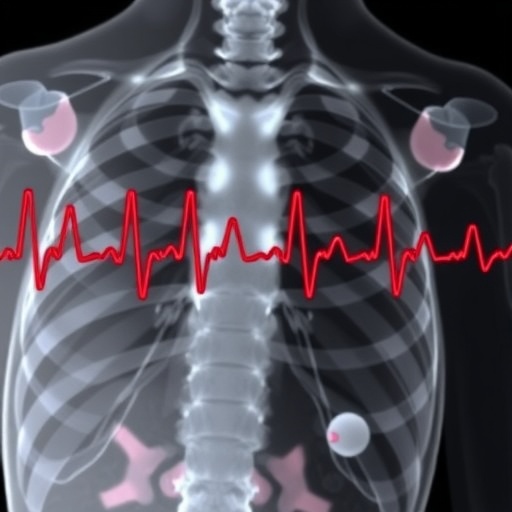In a significant advancement for oncology and hematology, researchers have developed a lymphoma-specific nomogram to predict the risk of venous thromboembolism (VTE) in patients newly diagnosed with lymphoma. This breakthrough tool addresses a critical gap in clinical management by offering a nuanced, lymphoma-tailored prediction model that promises to enhance risk stratification and guide prophylactic strategies more effectively than existing generic scoring systems.
Venous thromboembolism, encompassing deep vein thrombosis and pulmonary embolism, remains a leading cause of morbidity and mortality among cancer patients, with lymphoma patients being particularly vulnerable. Despite the high incidence of thrombosis in this group, prior risk prediction models have struggled to accurately stratify lymphoma patients, partly due to their reliance on generalized variables that fail to capture disease-specific intricacies.
This pioneering study, conducted retrospectively on a robust cohort of 790 newly diagnosed lymphoma patients over a three-year observational period, addressed this limitation head-on. Researchers employed an advanced analytical approach combining least absolute shrinkage and selection operator (LASSO) regression with multivariable Cox proportional hazards modeling to identify independent predictors of VTE, ultimately culminating in the creation of a predictive nomogram specifically optimized for lymphoma.
The composite predictors incorporated into the nomogram included clinical performance status as measured by the Eastern Cooperative Oncology Group (ECOG) scale, history of prior venous thromboembolism, the presence of coronary artery disease, usage of central venous catheters for treatment, and abnormalities in activated partial thromboplastin time (APTT) categories. These parameters reflect both clinical and hematological factors intrinsic to lymphoma patients’ thrombotic profiles.
Performance metrics indicated that the nomogram significantly outperformed conventional risk assessment models such as the ThroLy and Khorana scores. The model achieved area under the receiver operating characteristic curve (AUC) values as high as 0.818 at one year in the development cohort, with comparably strong validation metrics observed in a separate internal cohort. These statistics underscore the model’s superior predictive accuracy and reliability across multiple time points post-diagnosis.
Interestingly, calibration analyses demonstrated a high congruence between predicted VTE risks and empirically observed event rates, an essential facet of clinical utility. This fidelity in risk estimation suggests that clinicians could confidently use the nomogram’s output to tailor thromboprophylaxis regimens and monitoring intensity, potentially ameliorating the morbidity associated with thrombotic events.
Furthermore, the study elucidated the prognostic implications of thrombosis beyond the immediate vascular consequences. Patients experiencing VTE displayed significantly worse overall survival, with survival curves diverging most sharply in the initial six months following lymphoma diagnosis. These findings highlight the need for early identification and intervention within this high-risk period to improve patient outcomes.
This lymphoma-specific predictive tool represents a paradigm shift from broadly applied thrombosis models toward a more refined, disease-specific approach allowing personalized medicine. By capturing nuanced variables pertinent to lymphoma biology and treatment, this nomogram aligns with contemporary precision oncology objectives.
Clinical implementation of such a model could dramatically influence management paradigms, enabling hematologists and oncologists to stratify patients by objectively quantified thrombotic risk, thus optimizing resource allocation for prophylaxis, surveillance, and therapeutic interventions. Moreover, the model’s validation against internal cohorts strengthens confidence in its robustness.
Nonetheless, the authors acknowledge limitations inherent to retrospective design and single-center data, emphasizing the necessity for prospective, multi-center external validation to confirm generalizability across diverse patient populations and healthcare settings. Such future studies should also explore integration with emerging biomarkers and real-world clinical variables.
In addition to its clinical implications, this research underscores the growing role of machine learning and advanced statistical techniques like LASSO in refining prognostic tools within oncology. The methodological rigor applied here serves as a testament to the evolving interface between computational analytics and patient-centered care.
In summary, the research team’s development and internal validation of this lymphoma-specific VTE nomogram mark a vital leap forward in thrombosis risk management among lymphoma patients. This approach holds promise not only for reducing thrombotic complications but also for enhancing survival outcomes through informed, individualized prophylactic strategies.
As cancer care continues to evolve with precision and personalization at its core, tools like this nomogram will be instrumental in bridging the gap between risk assessment and optimized, patient-specific treatment decision-making. The oncology community awaits further validation and eventual integration of this promising model into routine clinical workflows.
The full details of this study appear in the latest issue of BMC Cancer, highlighting an important contribution to oncologic thrombosis literature and paving the way for innovations in lymphoma patient care.
Subject of Research: Development of a predictive nomogram specifically for venous thromboembolism in lymphoma patients.
Article Title: Development and internal validation of a lymphoma-specific nomogram for predicting venous thromboembolism: a retrospective cohort of 790 patients.
Article References:
Pan, L., Lin, W., Qiu, Y. et al. Development and internal validation of a lymphoma-specific nomogram for predicting venous thromboembolism: a retrospective cohort of 790 patients. BMC Cancer 25, 1720 (2025). https://doi.org/10.1186/s12885-025-15162-0
Image Credits: Scienmag.com
DOI: 10.1186/s12885-025-15162-0
Keywords: lymphoma, venous thromboembolism, VTE, nomogram, risk prediction, hematology, oncology, thromboembolism risk stratification, LASSO regression, Cox modeling
Tags: clinical management of lymphoma patientsdeep vein thrombosis and pulmonary embolismindependent predictors of VTELASSO regression in medical researchlymphoma and blood clotslymphoma-specific nomogrammultivariable Cox proportional hazards modelingoncology and hematology advancementspredicting venous thromboembolism riskprophylactic strategies for lymphoma patientsrisk stratification in lymphomaVTE in cancer patients





